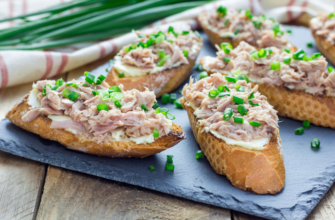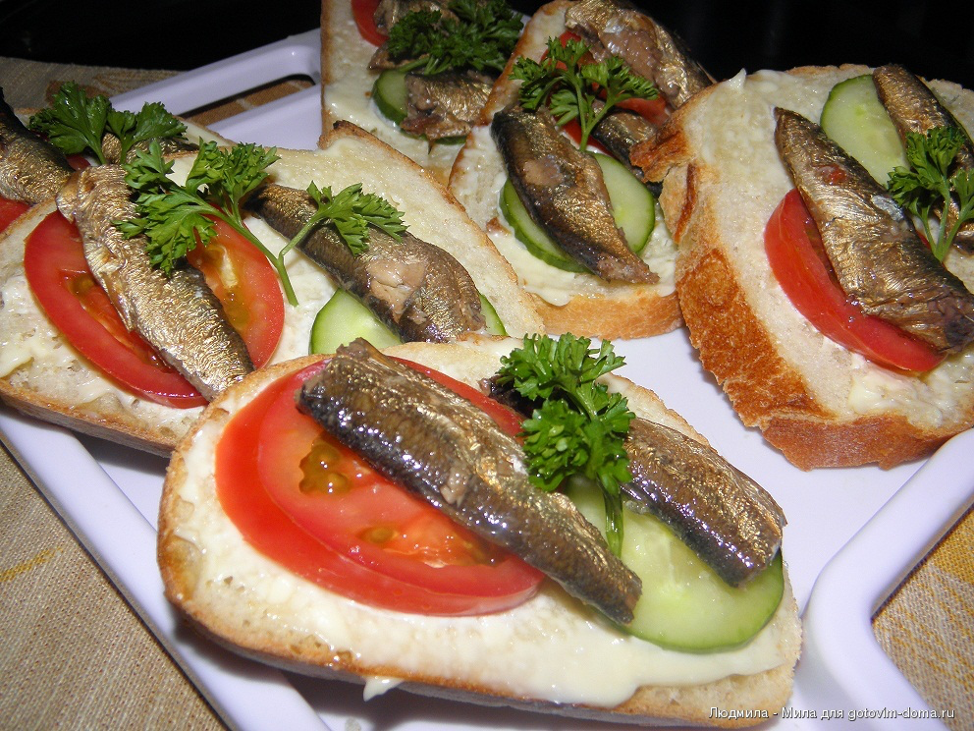Fried baby eels рецепт
Перевод:
Дорогая Лиззи,
Что относительно Вас? Как Вы проводите канун Нового года? Независимо от того, что Вы делаете, замечательно проводите время. Я желаю Вам и Вашей семье Счастливого Нового года.
В данный момент мы очень заняты. Папа ходит по магазинам. Мама делает специальное блюдо, пожаренных молодых угрей. Они восхитительны, честны! Тетя Бетси делает чай для всех, и Бабушка делает озеленение. Клара и Стив делают мытье посуды. Также мытье Стива винограда для сегодня вечером. В Испании это — удача, чтобы съесть двенадцать виноградин в полночь в канун Нового года! Что касается близнецов, они делают художественные оформления. Они взволнованы. Испанцы называют канун Нового года Nochevieja, что означает старую ночь. Это вызвано тем, что 31-го декабря прошлая ночь старого года.
Как вернулся все в Нью-Йорке? Я надеюсь, что погода не слишком холодная. Здесь в Мадриде, все готовятся праздновать канун Нового года. Магазины полны людей. Они покупают подарки и еду. Муниципальные рабочие украшают улицы и делают приготовления к сегодняшним торжествам на Площади дель Солем.
Всего наилучшего!
Роза
Оригинал:
Dear Lizzie,
What about you? How are you spending New Year’s Eve? Whatever you are doing, have a wonderful time. I wish you and your family a Happy New Year.
We are very busy at the moment. Dad is doing the last minute shopping. Mum is making a special dish, fried baby eels. They’re delicious, honest! Aunt Betsie is making tea for everyone and Grandma is doing the gardening. Clara and Steve are doing the washing-up. Steve’s also washing the grapes for tonight. In Spain, it’s good luck to eat twelve grapes at midnight on New Year’s Eve! As for the twins, they are making the decorations. They are excited. Spanish people call New Year’s Eve Nochevieja, which means the old night. This is because the 31st of December is the last night of the old year.
How’s everything back in NY? I hope the weather isn’t too cold. Here in Madrid, everyone is getting ready to celebrate New Year’s Eve. The shops are full of people. They are buying presents and food. Council workers are decorating the streets and making preparations for tonight’s celebrations in the Plaza del Sol.
All the best!
Rosa
Источник
Fried baby eels рецепт
Популярные рецепты
Крайне вкусный и максимально полезный вариант блюда, который идеально подойдет для детского и взрослого завтрака. Мягкий и сочный, без капли жира и масла! Ингредиенты: Яйцо куриное — 3 штМолоко — 2/3 стак.Соль (по вкусу).
Ингредиенты:— 300 гр куриной грудинки (2 шт)— 250 гр грибов (у меня шампиньоны) — 3-4 средних картофелины— 1 луковица— 1 ст. ложка муки— 250 мл молока— 150 гр сливок (у меня 15%)— 100 гр.
Ингредиенты:Картошка – 600г.Лук – 150г. Куриное филе – 500г.Твердый сыр – 250-300г.Чеснок – 3-4 зубчика.Сметана – 250-350 мл.Майонез – 2ст. ложки.Соль, перец, специи. Тонко порезать куриное филе.Порезать ломтиками чеснок.Смешать майонез, курицу, чеснок, соль, перец.
Ароматный, вкусный суп с грибами. Вам потребуется: 200 гр шампиньонов;1 морковь;½ головки репчатого лука;1-2 картофелины;70-100 гр плавленного сыра (у меня с грибным вкусом);100 гр молока или сливок;ст.л. растительно масла (для жарки);пучок укропа;соль, черный свежесмолотый.
Ингредиенты: 2 стакана муки неполный стакан водысоль 1/2 ч.л.3 ст.л. растительного масла============================укроппетрушкашпинаткинзазеленый лукяйцосыр мягкий 400 г Приготовление: -Замесить крутое тесто, накрыть полотенцем и дать ему полежать минут 30-40.-Зелень хорошо промыть и просушить, крупно порубить.
Источник
Перевод текста How’s everything back in NY?
Dear Lizzie,
C — How’s everything back in NY? I hope the weather isn’t too cold. Here in Madrid, everyone is getting ready to celebrate New Year’s Eve. The shops are full of people. They are buying presents and food. Council workers are decorating the streets and making preparations for tonight’s celebrations in the Plaza del Sol.
B — We are very busy at the moment. Dad is doing the last minute shopping. Mum is making a special dish, fried baby eels. They’re delicious, honest! Aunt Betsie is making tea for everyone and Grandma is doing the gardening. Clara and Steve are doing the washing-up. Steve’s also washing the grapes for tonight. In Spain, it’s good luck to eat twelve grapes at midnight on New Year’s Eve! As for the twins, they are making the decorations. They are excited. Spanish people call New Year’s Eve Nochevieja, which means the old night. This is because the 31st of December is the last night of the old year.
A — What about you? How are you spending New Year’s Eve? Whatever you are doing, have a wonderful time. I wish you and your family a Happy New Year.
All the best!
Rosa
Источник
Why baby eels are one of Spain’s most expensive foods
Angulas are astronomically expensive, up to 1,000 euros per kilo, which is strange because they don’t taste of much at all.
- By Mike Randolph
14 March 2018
Baby eels are one of Spain’s most expensive foods, but when you see them for the first time you might wonder why.
They’re not, to put it mildly, something that cries out to be eaten. When alive, they’re transparent and slimy, slithering and squirming like tiny snakes. Cooked, they turn opaque and resemble limp, dead worms, except they’re white with two tiny black dots for eyes. Hungry yet?
They’re not something that cries out to be eaten
But lots of delicious things are not particularly good looking; what’s important is the taste. Here’s where it gets strange. It’s not that angulas, as they’re called in Spain, taste good or bad. They don’t taste of much at all – which is strange because they’re astronomically expensive, up to 1,000 euros a kilo. Even stranger still, legend has it they were once so unappreciated they were used as fodder for chickens and pigs. But then again, when it comes to eels, everything is strange.
Many Spaniards find it difficult to understand why some people are willing to pay so much for angulas, including me. As a writer and podcaster about Spanish food and culture, I’ve always found it mystifying. Especially because the traditional recipe (a la bilbaína) calls for frying garlic and hot peppers in lots of olive oil and then adding angulas – a sure way to overpower their mild flavour.
Of course, mystery surrounds eels, not least when it comes to their life cycle, which sounds like something out of a dark fairy tale. They live in freshwater, but can breathe through their skin and travel over land for long distances. They eat just about anything, living or dead. Then at the age of 10 or so, they swim downstream in rivers across Europe to the Atlantic Ocean and somehow (it’s still unknown to science) they find their way to the Sargasso Sea, some 5,000km away. At depths of more than 500m – quite a feat for a creature that lives most of its life in shallow freshwater – they spawn and die, and their hatchlings drift on the Gulf Stream currents towards Europe, a journey that takes at least two years.
When the angulas finally arrive on Spain’s Atlantic shores, fisherman with scoop nets are waiting for them. The season starts in November, and the best time to catch them is in the middle of the coldest, blackest, rainiest nights when the tide is strong and the water is rough and turbid. Of course.
While angulas are incredibly pricey, the first batch to go on auction every year are more expensive still. In 2016, the first lot up for sale weighed 1.25 kilos and sold for an eye-watering 5,500 euros. Wholesale. And yet the second lot, which weighed about the same, sold for a ‘mere’ 1,070 euros.
So why the difference? Same baby eels, bought minutes apart, just one batch before the other. Even more curious is that both lots were bought by the same man.
When it comes to eels, everything is strange
I tracked down the buyer, José Gonzalo Hevia, who owned Casa Tista restaurant in Asturias, to ask him.
“It was a bit of marketing for my restaurant and also an homage to the fisherman,” said Gonzalo Hevia, now retired. He was once an angula fisherman himself. “The atmosphere at the auction is very exciting. It’s a big media event. The next day, the name of my restaurant was in every newspaper and on every TV station.”
That kind of publicity can bring in a lot of customers. “Some of my clients came back 20 or 30 times a season to eat angulas,” Gonzalo Hevia added. When I asked him what’s so special about them, he said, “It’s the texture more than anything.”
But the texture doesn’t seem so special to me. I remember them as slippery, with a very slight crunch. Still wondering why people would pay so much for them, I visited Arima, a noted Basque restaurant in Madrid, and spoke to the head chef, Rodrigo García Fonseca.
García Fonseca, who served 3kg of them in one week this past January, also a la bilbaína, said, “I wouldn’t pay that money for them. They have no taste, no colour, nothing, not even smell. A lettuce has more aroma. But I had two guys in here that ordered half a kilo of them. Five hundred euros in one shot. Some people who have money like to spend it. Who doesn’t like being a snob from time to time?”
Nagore Irazuegi, the owner of Arima, is also from the Basque Country, where angulas are ingrained in the traditional menus of Christmas Eve, New Years and the Day of San Sebastian on 20 January. “They’re way overpriced, but some people like the ostentation of it,” she said. But she is quick to add that there is more to it. “On special feast days, it’s just a tradition to eat them. And that ties a certain class of people together. It’s a cultural thing. More than anything, people want to belong.”
Whether or not baby eels were once fed to livestock (everyone I spoke to had heard the same story, but little evidence exists), there’s no doubt they were once the food of the working class in northern Spain. But that was back when angulas were plentiful, and therefore cheap. As angulas became scarce and prices rose, a company called Angulas Aguinaga saw an opportunity. In 1991, using surimi, a paste of processed fish, they created imitation angulas, which are called simply gulas. They look almost the same, but that’s about it. Gulas are softer and taste vaguely fishy. And yet they’re so popular you can find them in just about any grocery shop in Spain.
It was a perfect storm of demand
Part of the reason angulas are so expensive is that dams and environmental degradation have taken a toll on eel numbers, and they are now listed as critically endangered. Overfishing has also played a part. In the past, live angulas were exported to China, where they were fattened and sold as mature eels, but that has been banned since 2010. Still, a lively black market persists. In 2017, Spanish police uncovered an international angula-trafficking operation that, when busted, had a stash of gold ingots, 1m euros in cash, plus 2m euros worth of live angulas headed for China.
Three-star Michelin chefs have also played a role in the price increase. Manolo González, an award-winning food writer and historian from San Sebastian and secretary of one of the city’s famed gastronomic clubs, Cofradía del Ajo y el Perejil (The Brotherhood of the Garlic and Parsley), explains. “When I was young, in the 1950s and 60s, we ate a lot of angulas. At that time, they were still considered too low class for a restaurant to serve, but in the ‘70s, the great Basque restaurants like Arzak started to cook with them, and all of a sudden, angulas were high class.”
Now they were not only scarce, they were also fashionable. It was a perfect storm of demand. Prices skyrocketed.
And yet they remain popular. Why?
“Exclusivity has always played a role in gastronomy,” González explained. He likens it to buying wines that cost 5,000 euros a bottle, way beyond their true value, but worth it to some even if only to show status. While admitting that angulas don’t taste of much, González does enjoy the texture. “And for a food lover, on a special occasion, 80 euros for an appetizer isn’t completely out of reach.”
Exclusivity has always played a role in gastronomy
While he himself doesn’t cook with them anymore because of the high price, the taste of the classic angula recipe with oil, garlic and hot peppers still holds fond memories.
“You can make the same dish but with using spaghetti. We call it Poor Man’s Angulas,” he said with a touch of irony. “Try it, you’ll see how delicious it is!”
Join more than three million BBC Travel fans by liking us on Facebook, or follow us on Twitter and Instagram.
Источник
Dear Lizzie 6 класс spotlight перевод текста

Dear Lizzie,
А. What about you? How are you spending New Year’s Eve? Whatever you are doing, have a wonderful time. I wish you and your family a Happy New Year. Dear Lizzie 6 класс spotlight перевод текста
В. We are very busy at the moment. Dad is doing the last minute shopping. Mum is making a special dish, fried baby eels. They’re delicious, honest! Aunt Betsie is making tea for everyone and Grandma is doing the gardening. Clara and Steve are doing the washing-up. Steve’s also washing the grapes for tonight. In Spain, it’s good luck to eat twelve grapes at midnight on New Year’s Eve! As for the twins, they are making the decorations. They are excited. Spanish people call New Year’s Eve Nochevieja, which means the old night. This is because the 31st of December is the last night of the old year.
С. How’s everything back in NY? I hope the weather isn’t too cold. Here in Madrid, everyone is getting ready to celebrate New Year’s Eve. The shops are full of people. They are buying presents and food. Council workers are decorating the streets and making preparations for tonight’s celebrations in the Plaza del Sol.
All the best!
Rosa
Порядок параграфов в тексте С-В-А
Dear Lizzie 6 класс spotlight перевод текста
Дорогая Лизи,
А. А как ты? Как ты проводишь канун Нового Года? Чем бы ты не занималась, отлично проводи время. Я желаю тебе и твоей семье счастливого Нового Года.
В. Мы сейчас очень заняты. Папа делает последние покупки. Мама готовит особое блюдо, молодых жареных угрей. Честное слово, они изумительны на вкус! Тётя Бетси всем готовит чай, а бабушка занимается садом. Клара и Стив моют посуду. Стив также моет виноград на сегодняшний вечер. В Испании это к удачи съесть 12 виноградин в полночь на канун Нового Года! Что касается близнецов, они занимаются украшением. Они в предвкушении. Испанцы называют Канун Нового Года «Ночевия», что означает «старая ночь». Это потому что 31 декабря — последняя ночь старого года.
С. Как там дела в Нью Йорке? Надеюсь не очень холодно. Здесь, в Мадриде, все готовятся к празднованию Кануна Нового Года. В магазинах полно людей. Они покупают подарки и еду. Городские работники украшают улицы и готовятся к сегодняшним празднованиям в Плаза- дель- Соль.
И небольшое видео на английском с акцентом про празднование Нового Года в Испании
Запуск гонки, возможно, не первое, что приходит на ум в канун Нового года, но участие в веселом забеге «Сан-Сильвестр» является частью растущей традиции в Испании. Около 200 таких трасс «Сан-Сильвестре» проходят по всей Испании 31 декабря, самые большие в Мадриде (Сан-Сильвестре-Вальекана) и Барселоне (Курса-дель-Нассос).
Кушать дома
Испанцы, как правило, начинают свои новогодние праздники дома с семьей, прежде чем отправиться в бары и клубы после полуночи, поэтому не пугайтесь, если места немного тихие в преддверии волшебного момента.
Вы можете изо всех сил пытаться найти ресторан, открытый до полуночи, если в нем не будет организован праздничный ужин «nochevieja», для которого вам потребуется предварительный заказ, поэтому бронируйте заранее или устраивайте ужин с друзьями в чьем-то доме.
Затем, когда наступила полночь, уходите в ночь, чтобы отпраздновать начало нового года до рассвета!
Источник



